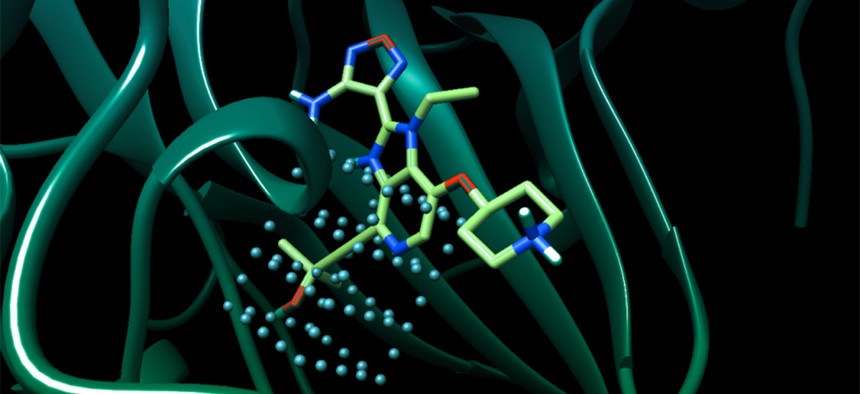Artificial Intelligence Could Build New Drugs Faster Than Any Human Team

Atomwise
Startup Atomwise has built a system which attempts to generate potential drugs for diseases like Ebola and multiple sclerosis.
Artificial intelligence algorithms are being taught to generate art, human voices, and even fiction stories all on their own—why not give them a shot at building new ways to treat disease?
Atomwise, a San Francisco-based startup and Y Combinator alum, has built a system it calls AtomNet (pdf), which attempts to generate potential drugs for diseases like Ebola and multiple sclerosis. The company has invited academic and non-profit researchers from around the country to detail which diseases they’re trying to generate treatments for, so AtomNet can take a shot. The academic labs will receive 72 different drugs that the neural network has found to have the highest probability of interacting with the disease, based on the molecular data it’s seen.
Atomwise’s system only generates potential drugs—the compounds created by the neural network aren’t guaranteed to be safe, and need to go through the same drug trials and safety checks as anything else on the market. The company believes that the speed at which it can generate trial-ready drugs based on previous safe molecular interactions is what sets it apart.
Atomwise touts two projects that show the potential of AtomNet, drugs for multiple sclerosis and Ebola. The MS drug has been licensed to an undisclosed UK pharmacology firm, according to Atomwise, and the Ebola drug is being prepared for submission to a peer-reviewed publication.
Alexander Levy, the company’s COO and cofounder, said that AtomNet learns the interactions between molecules much like artificial intelligence learns to recognize images. Image recognition finds reduces patterns in images’ pixels to simpler representations, teaching itself the bounds of an idea like a horse or a desk lamp through seeing hundreds or thousands of examples.
“It turns out that the same thing that works in images, also works in chemistry,” Levy says. “You can take an interaction between a drug and huge biological system and you can decompose that to smaller and smaller interactive groups. If you study enough historical examples of molecules … and we’ve studied tens of millions of those, you can then make predictions that are extremely accurate yet also extremely fast.”
Atomwise isn’t the only company working on this technique. Startup BenevolentAI, working with Johnson & Johnson subsidiary Janssen, is also developing new ways to find drugs. TwoXAR is working on an AI-driven glaucoma medication, and Berg is working on algorithmically-built cancer treatments.
One of Atomwise’s advantages, Levy says, is that the network works with 3D models. To generate the drugs, the model starts with a 3D model of a molecule—for example a protein that gives a cancer cell a growth advantage. The neural network then generates a series of synthetic compounds (simulated drugs), and predicts how likely it would be for the two molecules to interact. If a drug is likely to interact with the specific molecule, it can be synthesized and tested.
Levy likens the idea to the automated systems used to model airplane aerodynamics or computer chip design, where millions of scenarios are mapped out within software that accurately represents how the physical world works.
“Imagine if you knew what a biological mechanism looked like, atom by atom. Could you reason your way to a compound that did the thing that you wanted?” Levy says.





